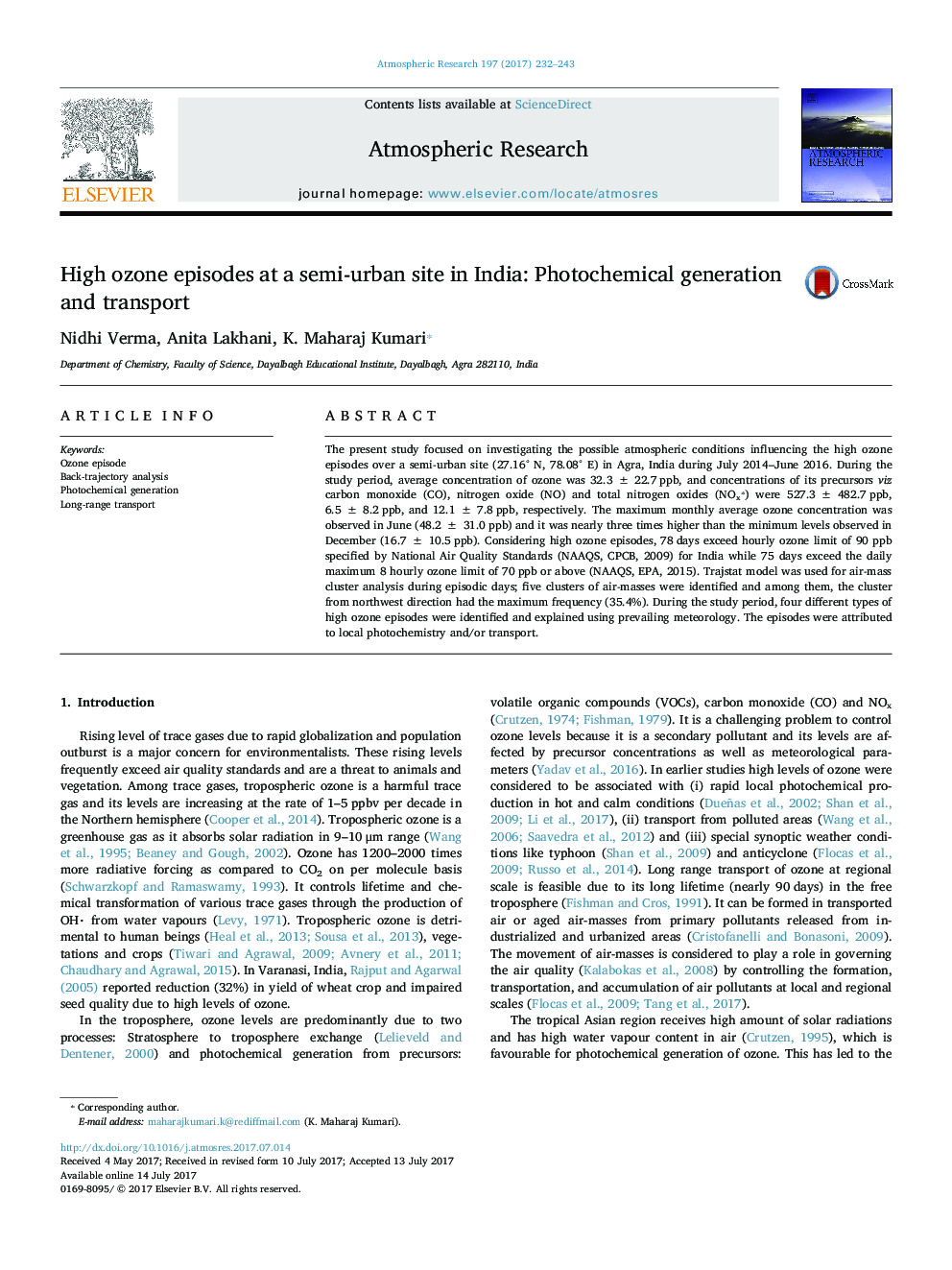| Article ID | Journal | Published Year | Pages | File Type |
|---|---|---|---|---|
| 5753744 | Atmospheric Research | 2017 | 12 Pages |
â¢Ozone episodes have been identified on the basis of National air Quality Standards.â¢Five air mass clusters have been identified during ozone episodes.â¢Pressure gradient was predominantly moderate indicating horizontal mixing.â¢Local photochemistry and/or transport are exemplified through case studies.
The present study focused on investigating the possible atmospheric conditions influencing the high ozone episodes over a semi-urban site (27.16° N, 78.08° E) in Agra, India during July 2014-June 2016. During the study period, average concentration of ozone was 32.3 ± 22.7 ppb, and concentrations of its precursors viz carbon monoxide (CO), nitrogen oxide (NO) and total nitrogen oxides (NOxâ) were 527.3 ± 482.7 ppb, 6.5 ± 8.2 ppb, and 12.1 ± 7.8 ppb, respectively. The maximum monthly average ozone concentration was observed in June (48.2 ± 31.0 ppb) and it was nearly three times higher than the minimum levels observed in December (16.7 ± 10.5 ppb). Considering high ozone episodes, 78 days exceed hourly ozone limit of 90 ppb specified by National Air Quality Standards (NAAQS, CPCB, 2009) for India while 75 days exceed the daily maximum 8 hourly ozone limit of 70 ppb or above (NAAQS, EPA, 2015). Trajstat model was used for air-mass cluster analysis during episodic days; five clusters of air-masses were identified and among them, the cluster from northwest direction had the maximum frequency (35.4%). During the study period, four different types of high ozone episodes were identified and explained using prevailing meteorology. The episodes were attributed to local photochemistry and/or transport.
Graphical abstractDownload high-res image (151KB)Download full-size image
